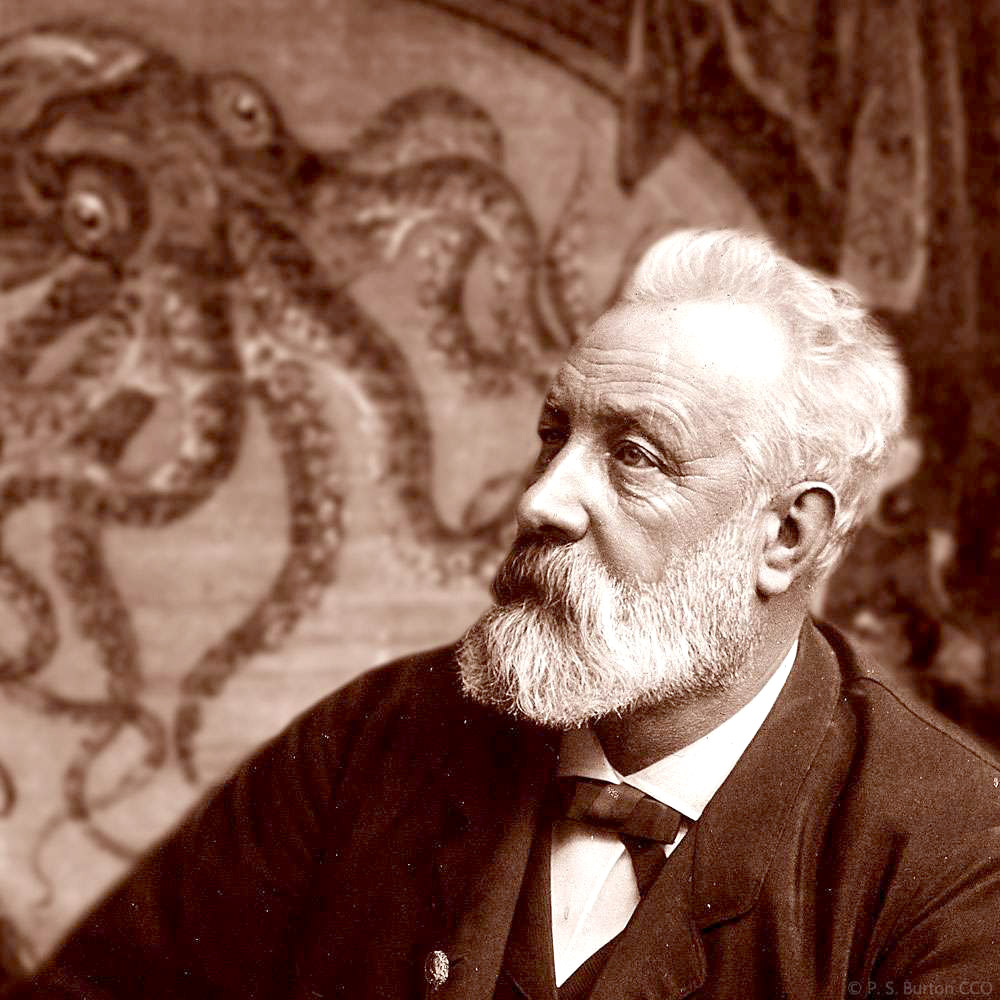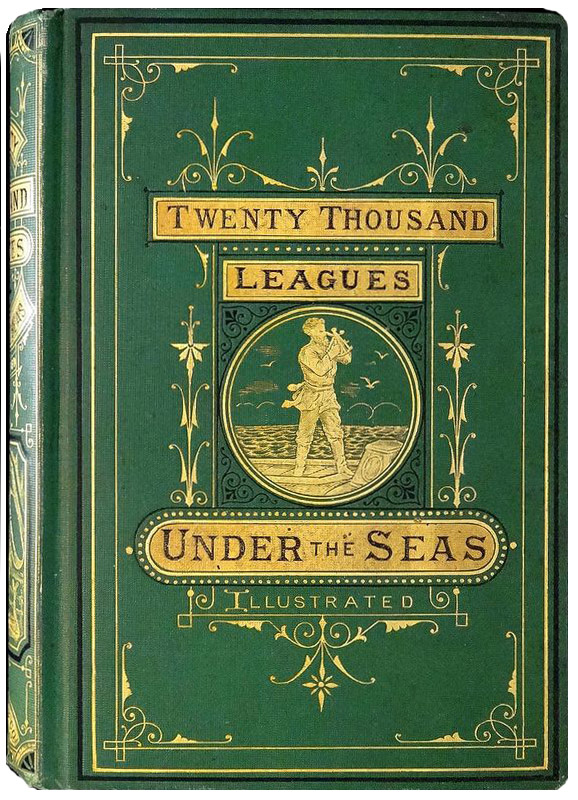Take a boy of nine who couldn’t read or spell, give him a highly illustrated book called “20,000 LEAGUES UNDER THE SEA” and what happens? He lives his life as an inventor, artist and writer with a love of all things oceanic. Jules Verne inspired me and continues to. Why? Because he imagined worlds and machines that we are only now exploring. You can do a Google search to view the over 60 books he wrote in the venue called “Steam-Punk”, inspired by the world of the newly invented steam engine and the possibilities of the Industrial Revolution. Verne was the King of “Steam Punk”.
Jules Gabriel Verne was born in 1828 and died in 1905. During his lifetime, the seas of this world were still and continue to be underexplored. Even today, only 10% of our oceans are really explored.
(Actually, I wish they would un-explored, before we exploit it all!) We know more about the workings of inner and outer space than we do about our earthly oceans. When Verne put his mind to imagine the depths of the oceans, he let his mind expand into possibilities that we are only now beginning to understand. He is considered the creator of the modern Science Fiction form of literature. Let’s “DIVE” into learning how Verne’s “20,000 Leagues Under the Sea” predicted the nautical future!

First-a quick intro into the novel itself. “20,000 Leagues Under the Sea” was published in France in 1870. It immediately became a worldwide bestseller. It is a tale of a naval hunt for an undersea monster that is sinking navy ships throughout the world. The year is 1866. A marine biologist, Pierre Aronnax, his servant, Conseil and a famous harpooner, Ned Land, join the frigate “Abraham Lincoln”, commanded by Captain Farragut. After months of searching, they spot and attack the beast. In defense, it rams the Abraham Lincoln and Aronnax, Land and Concseil fall overboard and end up on the monster which is a giant steel submarine called “Nautilus” and commanded by a man who calls himself Captain Nemo.
Nemo built the sub, hates all civilization because of its constant wars, and is dedicated to using his amazing vessel to wreck vengeance on all those who wage war. As you can see, nothing ever changes. Eventually, his captives escape, and Nemo and the Nautilus disappear. Read it – It’s a trite more complex than that.


Without Verne’s sophisticated submarine, the Nautilus, there would be no story. Consider this, when he wrote this novel every nation of the world had Navies primarily of wooden sailing ships armed with brass cannons as they had been for 300 years prior. During the Civil War both the Union and Confederacy built the first iron-clad ships. Two of them, The Monitor and the Merrimac, actually battled each other to a draw.
Naval engineers also experimented with crude, semi-submersible submarines that would have large drills to sink a vessel or other devices to place explosives under hulls to sink them. All performed poorly. Verne imagined a steel submarine that could dive on command to unimaginable depths, stay below for days if necessary, had the speed to drive its massive iron points into any ship and sink them, and could activate an “Electric like” shield for defense. Her power source, a type of electric power source from the minerals Mercury and Natrium, was silent and renewable almost predicting nuclear-powered submarines of today, and she had large, unbreakable, clear, waterproof windows like a type of super Plexiglas 100 years before it was invented. This window into the sea could be closed in automatically with sliding steel protectors. Under the sea, the Nautilus has high beam lights that illuminates the sea as if it were daylight. The Nautilus also had interior electric-type lights and a communication system. She had an integrated lifeboat attached to her deck, add to this her hydrodynamic design and you have, in 1870, modern submarine technology imagined almost to perfection.
Captain Nemo’s crew is explicitly described as being from many nations of the world all working together. Verne gives them the ability to exit the Nautilus on the ocean bed through a bottom hatch in a chamber that opens to the sea but prevents seawater from coming in. The crew has weighted deep dive suits that completely enclosed them yet leave them free enough to walk and work under the sea. Their air supply is evocative of the re-breathers modern divers have been recently using.
Today, environmental issues are foremost in our minds. In “20,000 Leagues Under The Sea” Verne creates an undersea floor where these divers farm the bottom and harvest all types of sea vegetables and seaweeds for the crews’ needs. In addition, they harvest shellfish, sea cucumbers and fish. No one imagined today’s future in aquaculture as Verne did. It is as if he is living today and warning us to shepherd the resources of the oceans, which, by the way, we are doing quite a miserable job of doing.
Captain Nemo also shows his guests how they can mine gold and other minerals from the sea bottom but explains he has no interest in these valuables because mankind would destroy the seas to obtain them. This is already happening folks!! Any gold and jewels Nemo found in old shipwrecks he collected and delivered to the poorer countries of the world. The Nautilus also was imagined by Jules Verne to have the ability to submerge and travel under the ice caps to surface through the ice at the North Pole nearly a century before it actually happened.
Jules Verne imagined all this and more before science and engineering made it possible. He imagined so many future inventions and adventures, wrote books about space travel, journeys to the earth’s center and air travel.
I think his masterpiece, “20,000 Leagues Under the Sea”, speaks more to us today than ever before. It continues to be one of the most-read books of all time. Treat yourself to an adventure by reading it.
